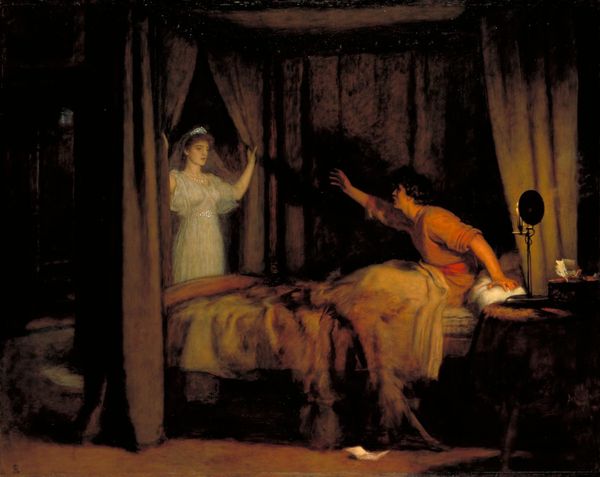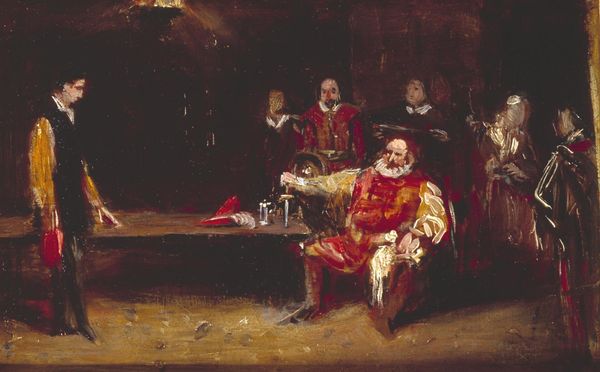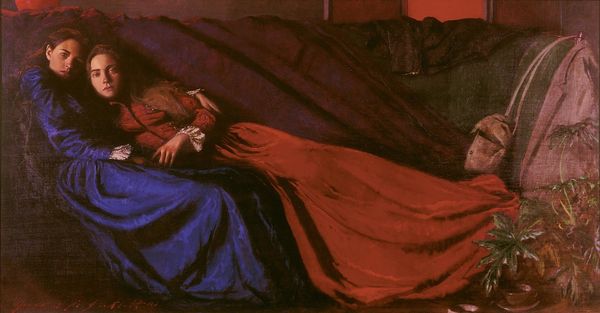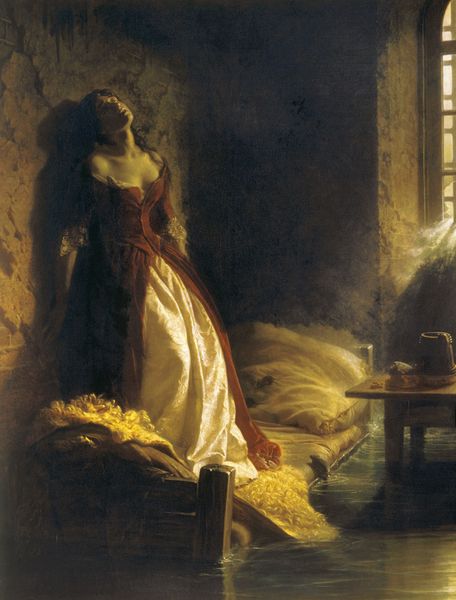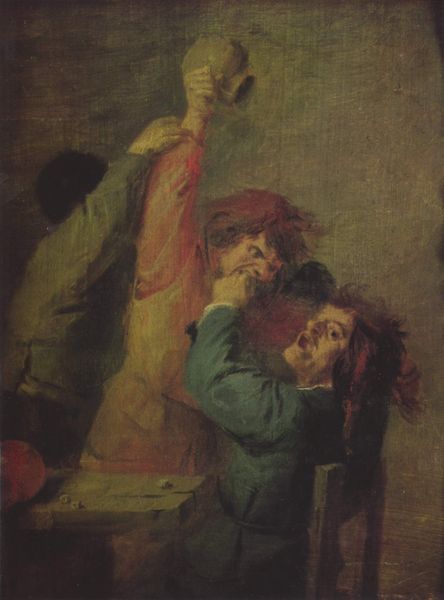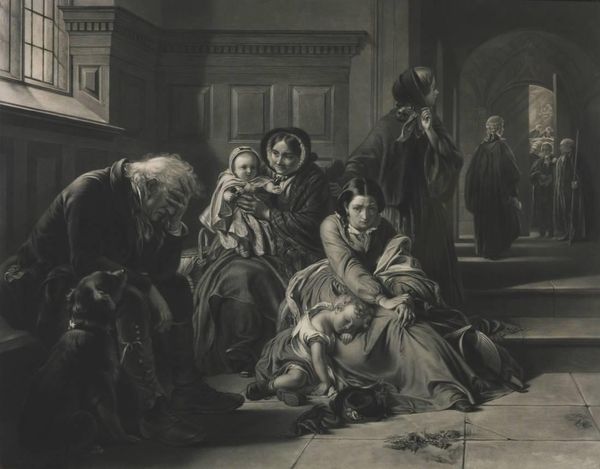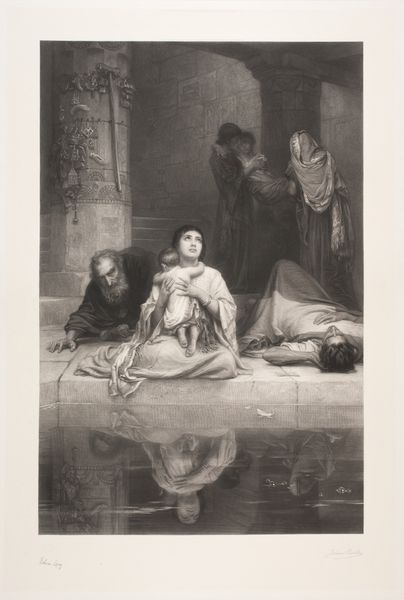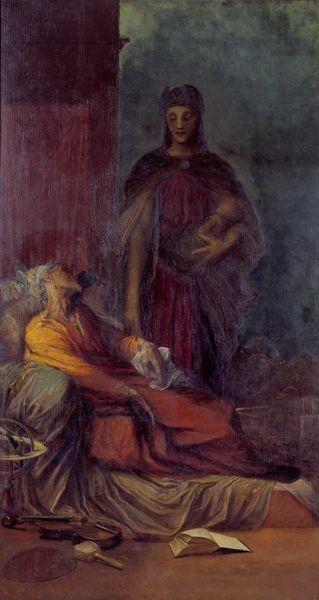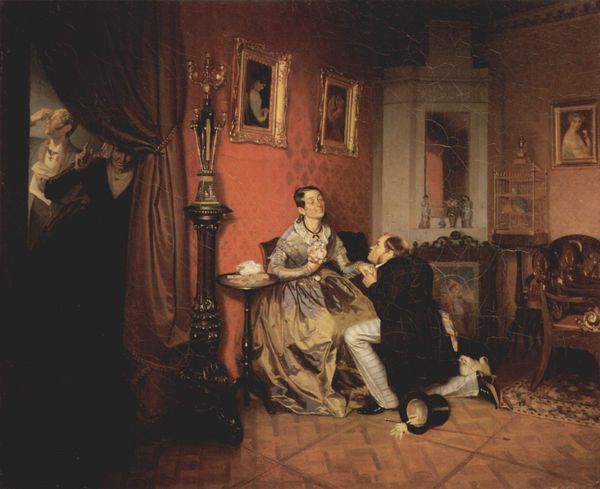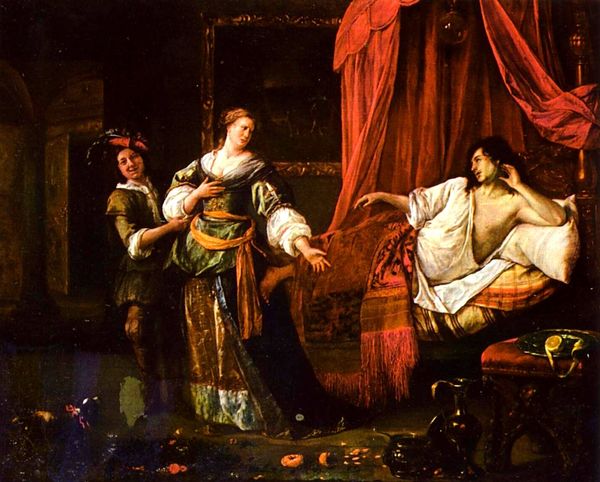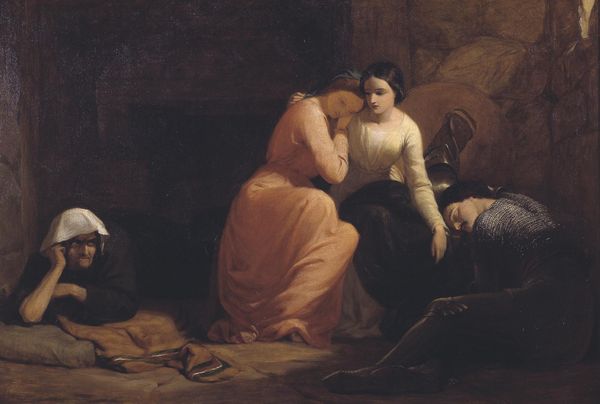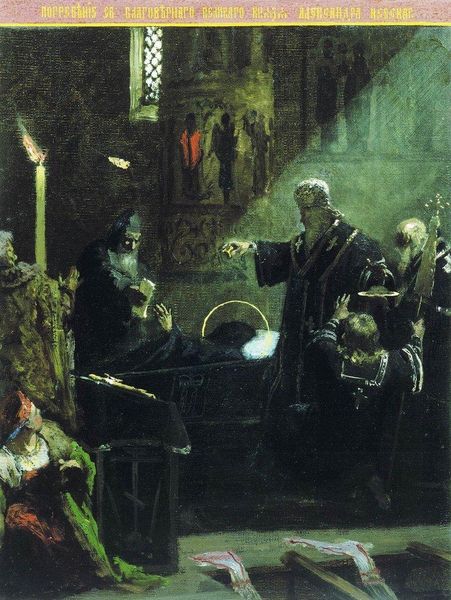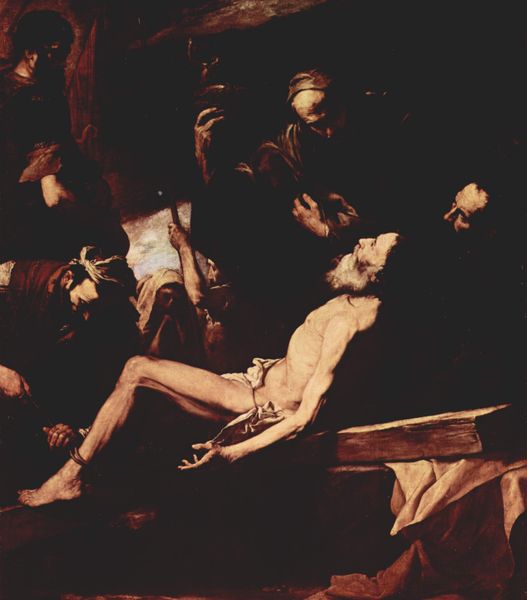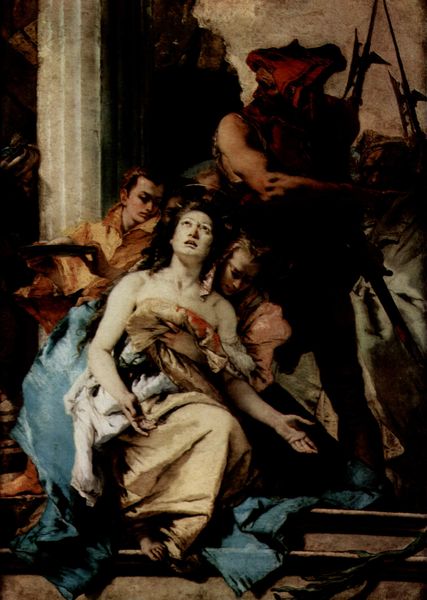
Dimensions: 48 x 58 cm
Copyright: Public domain
Curator: Gazing upon Ilya Repin’s 1885 painting, “Refusal of the Confession,” what strikes you first? For me, it’s that potent blend of stillness and simmering defiance. Editor: Immediately, the oppressive weight of the atmosphere hits me. That suffocating darkness! The palette seems almost entirely steeped in shadow, doesn’t it? Curator: It absolutely amplifies the scene’s gravity, but observe how Repin uses those precise flecks of light to illuminate the convict's face. See the inner turmoil, that tight-lipped resolve etched onto his features. He’s turning away, inwardly rebelling against perhaps not just the priest but what the priest symbolizes: the Church, the Tsar, the entire system. Editor: This painting arrives right as revolutionary sentiments were gaining strength in Russia. Given the subject and Repin’s associations with the "Peredvizhniki" movement championing social critique, could this refusal represent something larger? Not just personal salvation denied but the rejection of an outdated social order? Curator: That's insightful! It's not a docile acceptance of fate, but a conscious turning towards his truth, however that might be. Maybe he believes in redemption but refuses to find it through prescribed means? We also can't ignore Repin’s technical skill here: how he uses oil paints with a restrained, almost monochromatic palette to highlight texture and tension. Editor: Absolutely, that stark contrast in lighting further underscores the ideological conflict at play. What might that cross represent for the convict, beyond mere religious symbolism? Consider its role in maintaining power structures, especially at the time! It’s an active statement, refusal becomes his own form of agency. Curator: This painting presents questions instead of answers. Was Repin questioning the accepted doctrines of faith and governance, or simply documenting a pivotal moment in someone's life? Probably both! He invites viewers to question who we perceive as righteous, and where authentic morality truly lies. Editor: It urges us to confront systems of power, even today, inviting critical thought regarding societal redemption and individual freedoms. A painting still profoundly resonant, given our own ongoing struggles for social justice and equality. Curator: Right, maybe that's what still compels us. That sense of a pivotal, individual revolt against an institution. Editor: Precisely. A whisper of defiance against absolute authority.
Comments
No comments
Be the first to comment and join the conversation on the ultimate creative platform.
